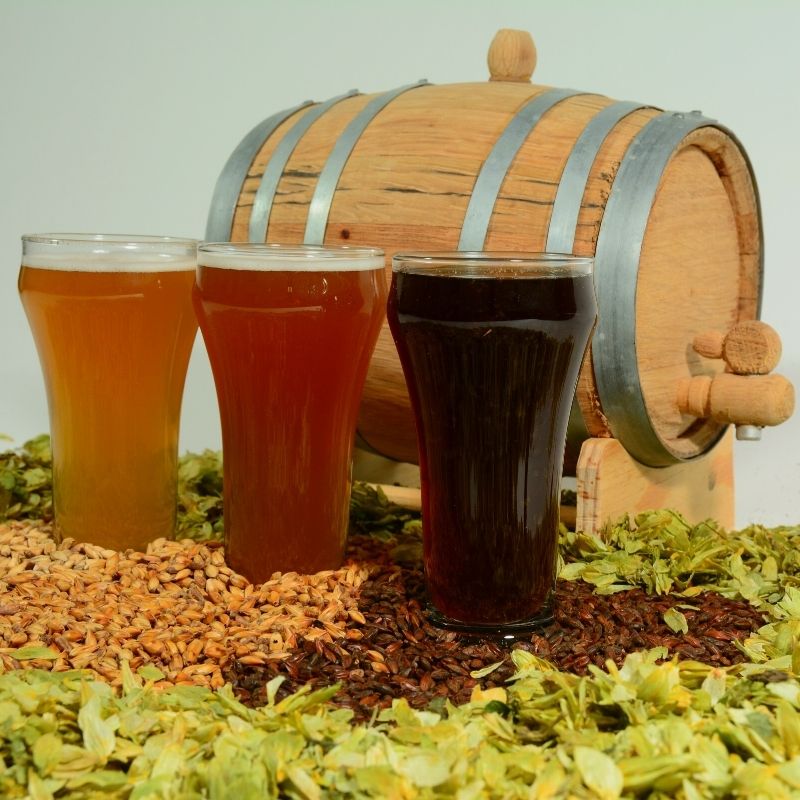 Have you been perfecting your homebrew recipe and bottling some good brew? If you are like most homebrew enthusiasts, you have been hooked since you popped the first top you made yourself. Now that you know you are in it to win it, you might be thinking about kegging your batch which is not only a big timesaver, but it is kind of nice to fill your mug with some fresh tap brew that is always at the ready.
Have you been perfecting your homebrew recipe and bottling some good brew? If you are like most homebrew enthusiasts, you have been hooked since you popped the first top you made yourself. Now that you know you are in it to win it, you might be thinking about kegging your batch which is not only a big timesaver, but it is kind of nice to fill your mug with some fresh tap brew that is always at the ready.
Changing from bottling to kegging your homebrew beer requires an initial investment, but it is pretty easy to do and offers many benefits.
Equipment Needed to Keg Your Homebrew Beer
Kegging your homebrew beer requires an initial investment, and you will need some space in a refrigerator or a kegerator as refrigeration is required to maintain correct serving pressure. The basic equipment needed for kegging your own beer includes:
- Keg
- CO2 tank with a regulator
- Two hoses and connectors
- a tap
5 gallon kegs are popular, they are easy to manage and about the size of a scuba tank although 1.5 and 2.5 gallon mini-kegs are also a good option if you have limited space in your refrigerator.
The CO2 tank delivers the carbon dioxide gas that carbonates and also provides the pressure for dispensing your beer. CO2 does not spoil your brew like oxygen will and a pressurized CO2 keg will last for many months. There are beginner kegging kits available although the CO2 tank is shipped empty. You can fill it at a local beverage gas supplier.
The pressure regulator is attached to your CO2 tank and used to set the pressure to about 12 psi for serving. There is a gas line that connects from the regulator to the keg to pressurize it. The keg also has an output line that connects to a tap. A plastic tap is often included with most beginner kits, although you can attach a nice pub style, stainless steel tap right on your own bar or refrigerator door.
When you first assemble your kegging system, be sure to check for leaks which is easy to do with the spray bottle of soap and water once you apply a little pressure. If there is a leak you should see bubbles present where you spray the soapy water. Make sure you sanitize your keg thoroughly before siphoning your finished batch into it. Once full, seal and pressurize. The purge valve will remove oxygen from the keg as it is replaced with CO2.
Put your keg in the refrigerator and set the psi to about 12 to carbonate your beer. Your beer should fully carbonate in about 5 to 7 days left in the refrigerator under pressure. Attach a tap and enjoy.
Advantages of Kegging Your Homebrew
There are many advantages of kegging your own homebrew. Some of the most recognizable benefits include:
- Easier to sanitize – it is much easier to sanitize a keg than many bottles.
- Saves a lot of time – it saves a lot of time when you do not have to prepare dozens of bottles.
- A lot less cleanup – banishing the bottles is definitely a lot less cleanup.
- Fresher taste – draft beer tastes fresh and stays fresh because air does not come into contact with the beer in the keg.
- No sediment – with kegging, you never have to worry about sediment on the bottom of your bottle.
- Carbonates quicker – you do not have to wait as long since kegged beer carbonates faster than bottled beer.
- Do not use sugar for carbonation – when kegging, CO2 provides the carbonation instead of sugar so you can adjust it to your liking.
With all these advantages, we think you might like kegging your beer just as much as you enjoy drinking your homebrew out of bottles. It is quite convenient when you have a gathering, you do not have to worry about cleaning up bottles everywhere or broken glass. Stop by your local Chicago brew store, RainMakers Supply, for your homebrew equipment and supplies and answers to all your questions.
RainMakers Supply is your leading homebrew store in the Chicagoland area, offering brewing equipment and supplies as well as meeting all your hydroponic growing needs. Stop by today to speak with an experienced home brewing expert and for more homebrew kegging tips.
